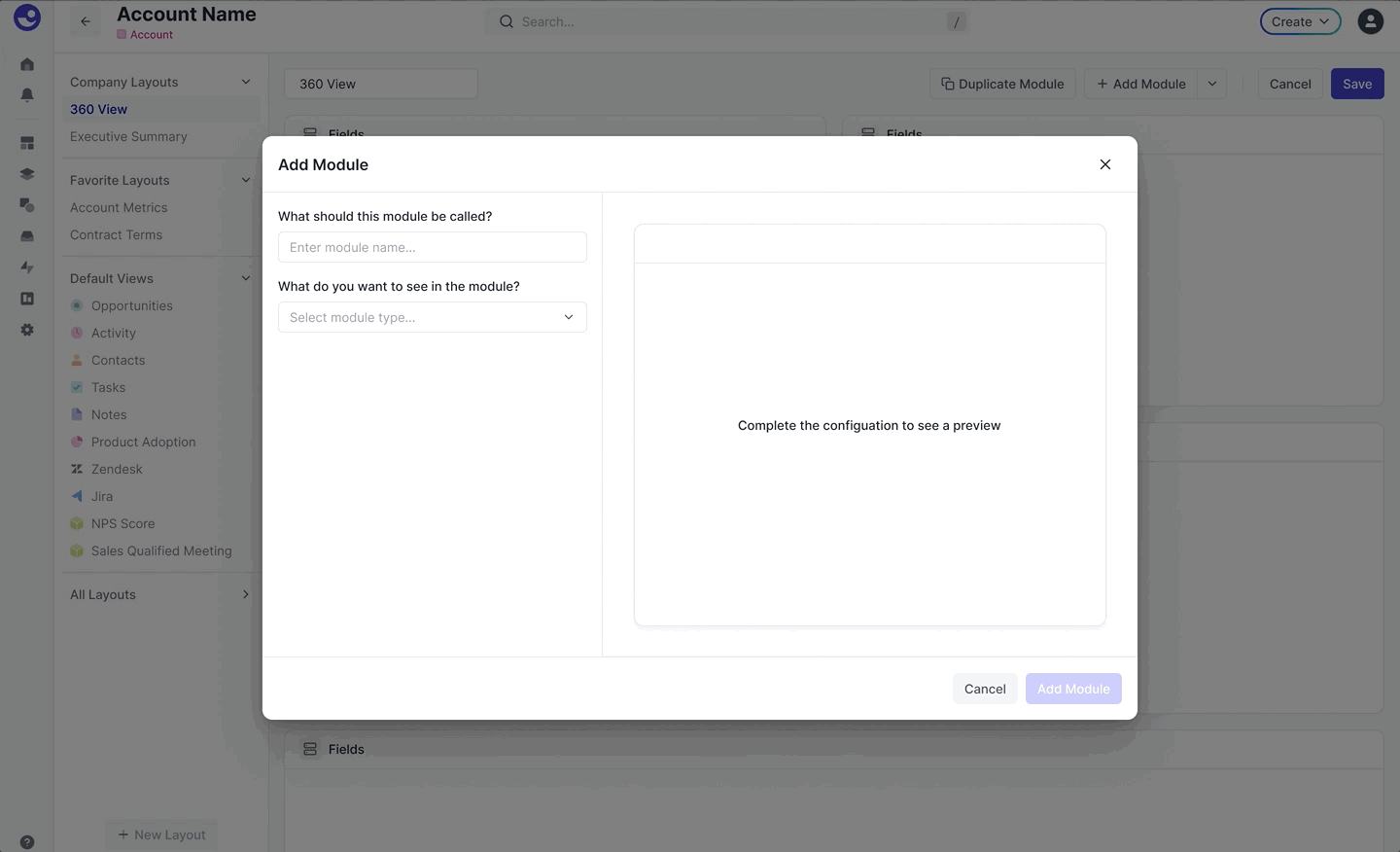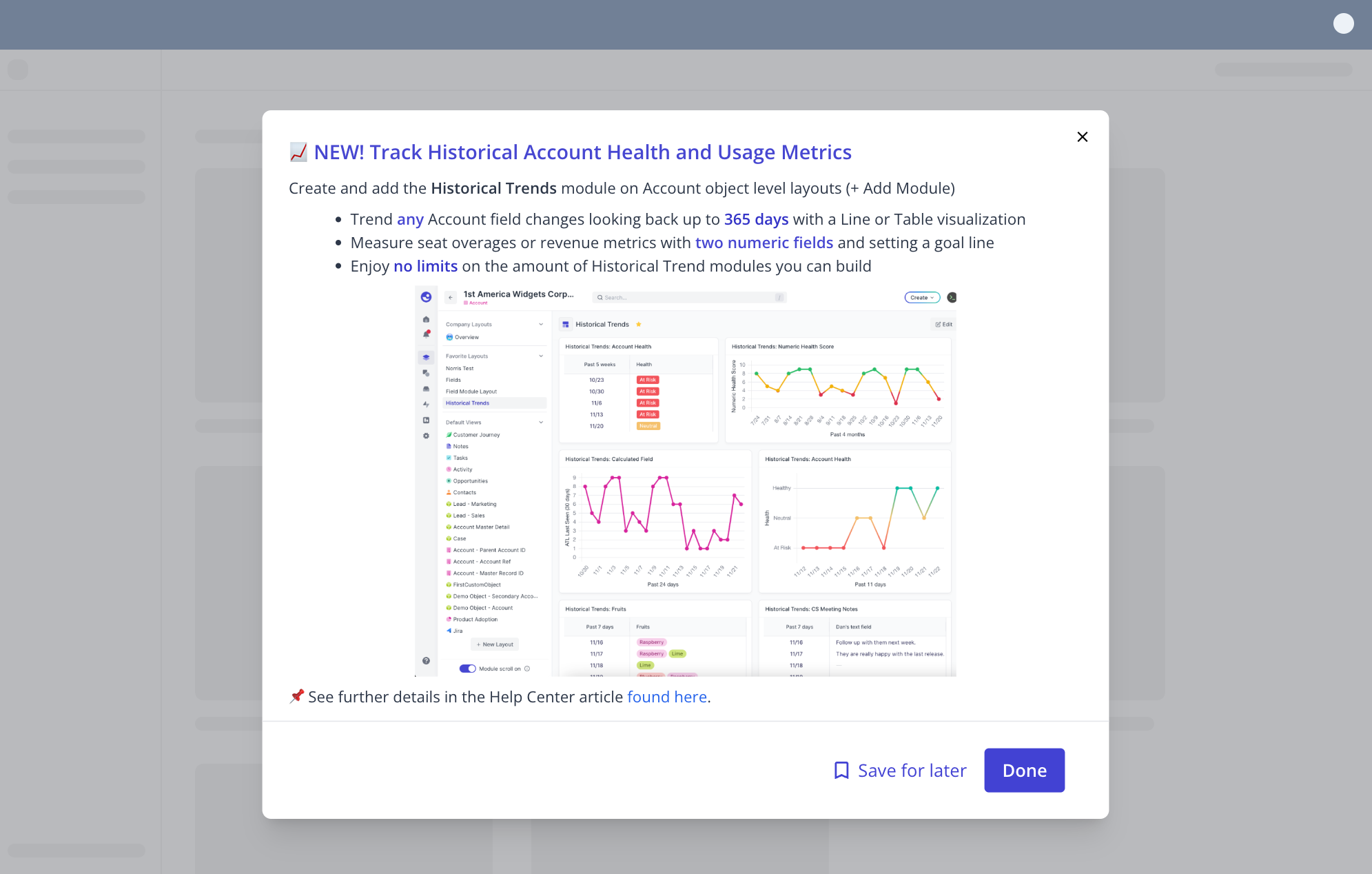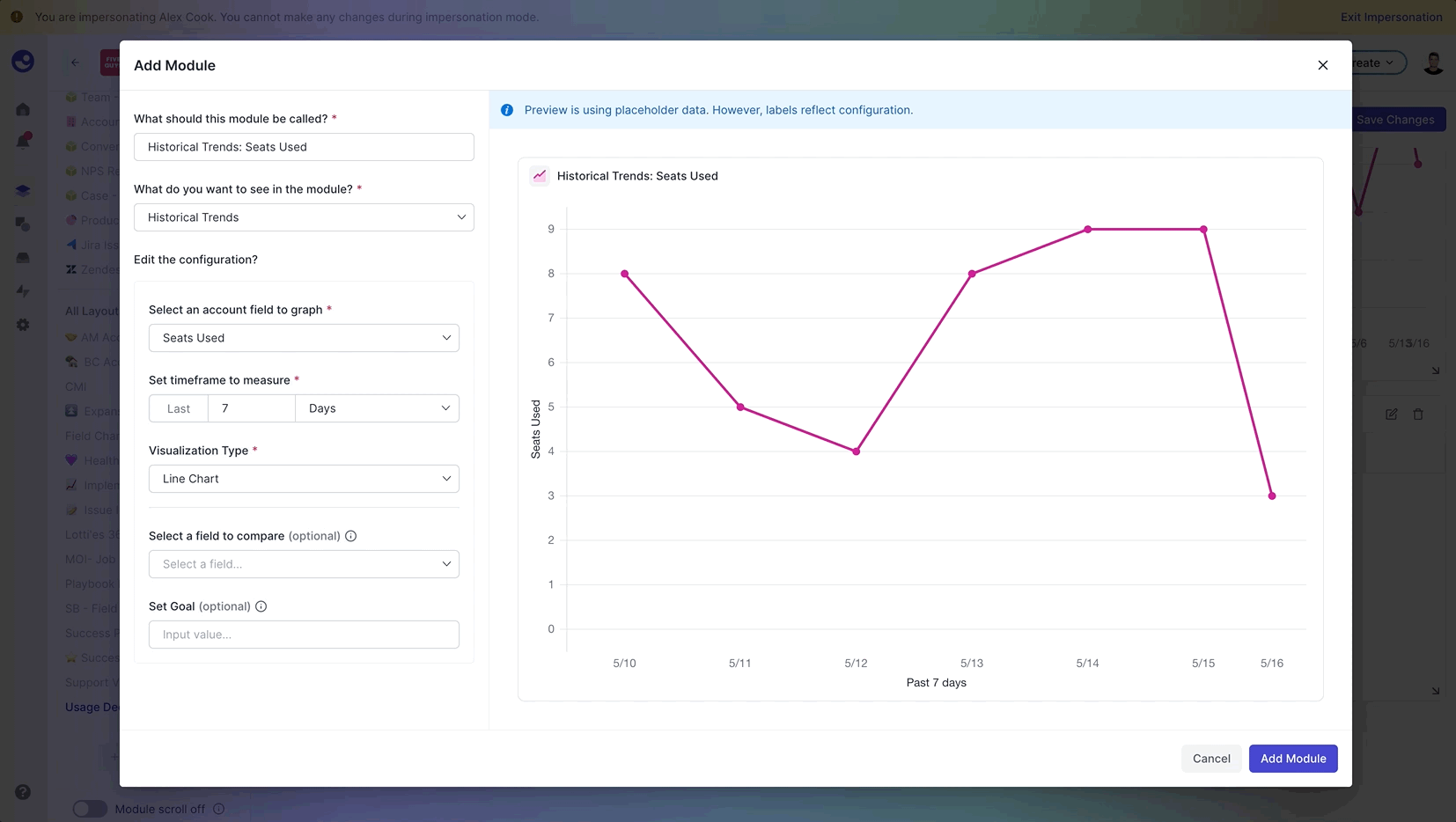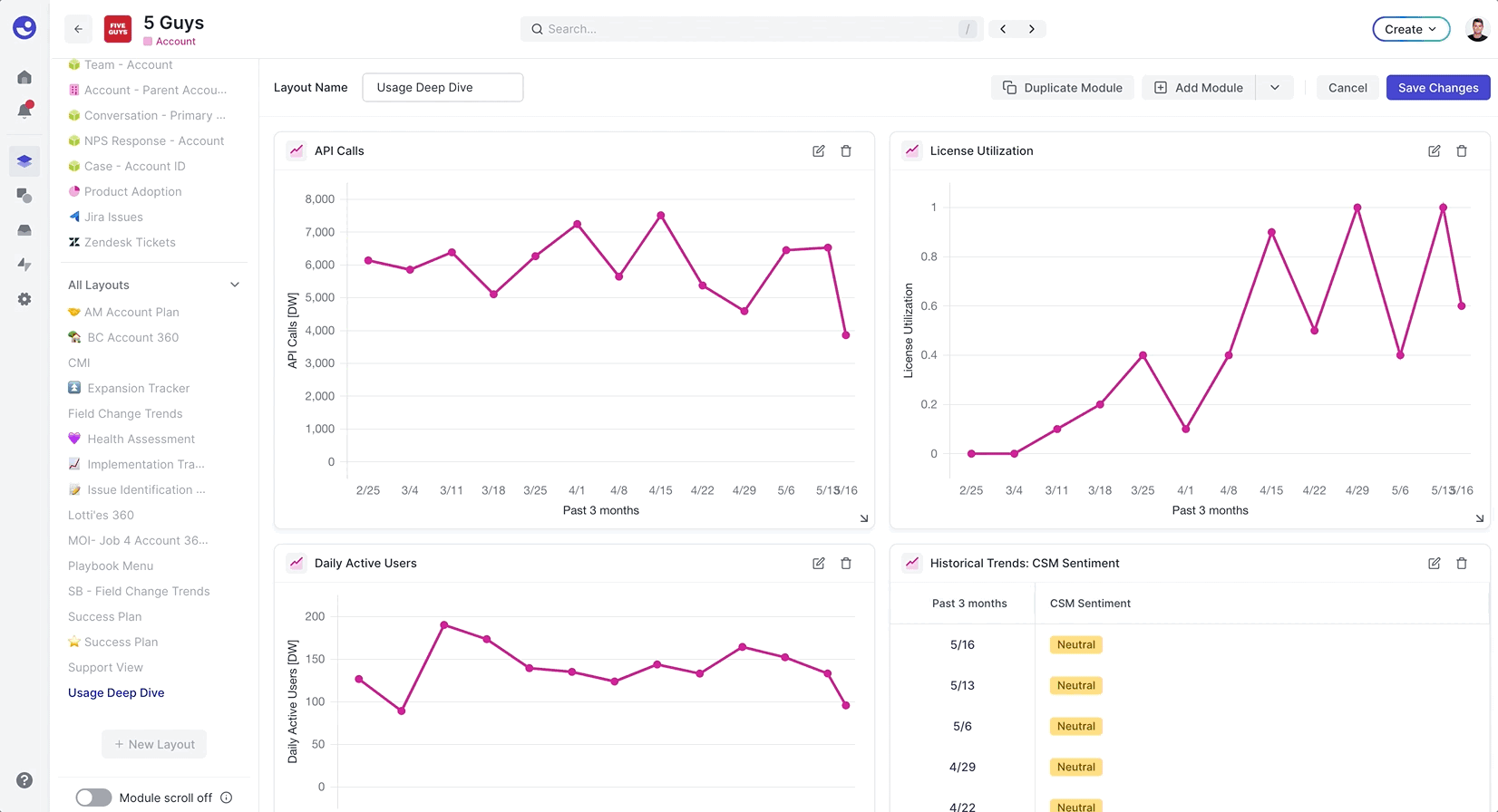Trend Data Modules
Catalyst Software
COMPANY OVERVIEW
Catalyst is a Customer Success Platform (CSP) that aims to center customer data in every organization and shift the focus of B2B revenue through customer-led growth. We help equip Customer Success organizations with data rich features, insights, and automation to manage their accounts at scale while increasing the odds of a customer renewing or expanding.
Our most common personas include the Customer Success Manager, the CS Ops/Admin, and the CS Leader. Each of these personas have different end goals and motivations and to quickly sum up:
Customer Success Manager (CSM) - owner of accounts whose primary role is to cater and service the needs of their customers. Often they are our “voice” of the customer
CS Ops/Admin - similar to Revenue Operations, they are the administrator of processes and tools for CS organizations
CS Leader - the Head of CS Teams that often report to the CEO and provides insights to the Board when it comes to customer health, renewals, and revenue forecasting
Our primary competitors include Gainsight, Vitally, ChurnZero, Planhat, and Totango to name a few if you’re curious to learn about this landscape and other offerings in this space.





